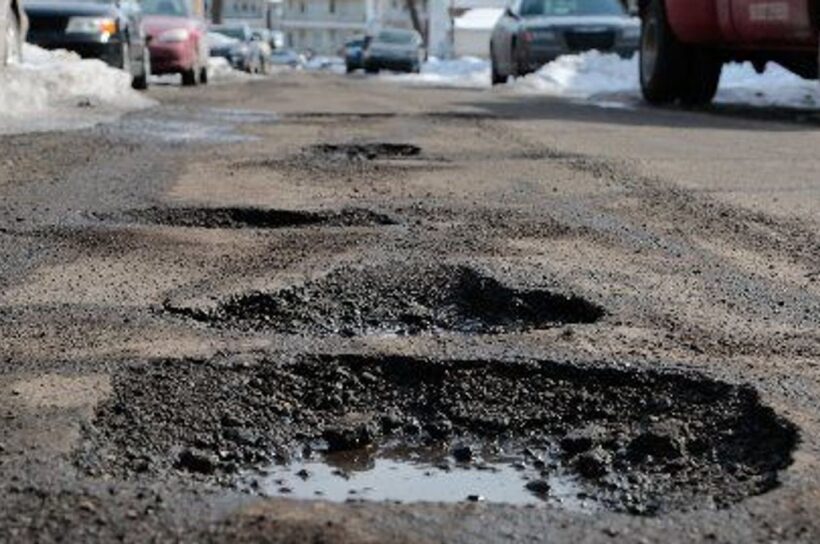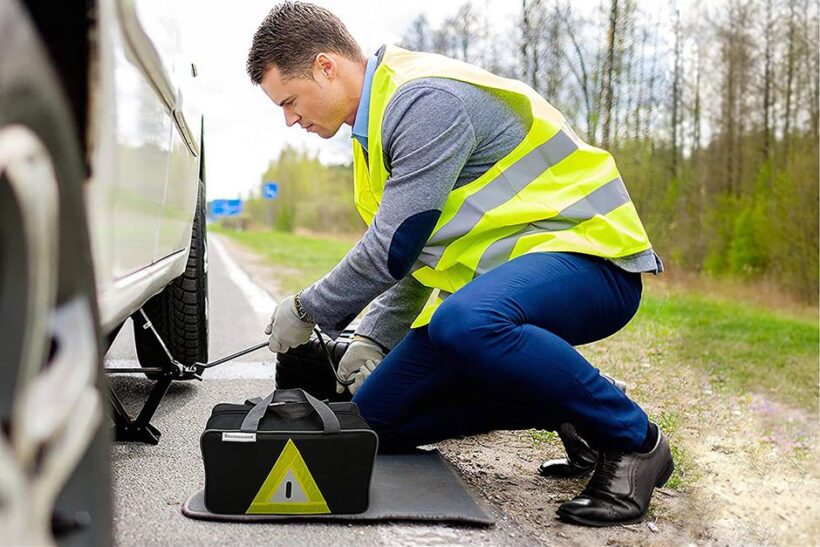In general, rough roads are uncomfortable, noisy, and disrupting. It is also tough to handle this issue when you drive. Many drivers struggle with the challenging road conditions and the bad roads might damage your car tires if you do not drive carefully.
So, in your opinion, how important is it to drive on a well-maintained road? In case you want to know how to deal with very poor roads, you should read through this article. It is about to give you much useful information about 5 tips for driving safely on rough road conditions.
What Is the Type of Hazards on Rough Roads?

Some hazardous condition relating to the weather such as heavy rain, snow, or thick fog seems to be normal. All you can do to deal with these problems is to prepare, practice, and be cautious. Yet, there is more hazardous condition that drivers may come across on the road, leading to serious accidents as follows.
Clear zone problems
Some fixed and hard objects may cause a risk when you drive such as fallen trees, utility poles, or water drains that are uncovered.
Potholes
Potholes are known as the depression on the road surface. In another way, these potholes can lead to serious damage on car tires, making them swerve and causing collisions.
Oil and chip
Several roads that need resurfacing use oil and chip as a temporary solution. But, it can get dangerous and slippery when driving for a long time.
Intersection geometry
This term is used to imply some dangerous intersections. As you can see, there will be narrow roads or even sharp turns which need mirrors.
Isolated ice patches
This issue might make you slide or spin due to the frozen and slick surfaces. If the road cannot drain water appropriately, it will freeze and create a hazard on the road.
Work zones
For some drivers, work zones sometimes are a nightmare for some drivers due to the unpredictable changes and confusing instruction signs. As you can guess, there will be lots of difficulties for a safe drive but still, keep track well to get through work zones.
Some Driving Tips for Bad Roads

To help drivers in this regard, here are 5 tips for driving safely in rough road conditions.
Keep your car at moderate speed
A lot of people might get furious and frustrated if they have to drive on bad roads. Hence, they sometimes want to speed up to get through the roads as quickly as possible.
However, accelerating on a poor road is not a good idea when it might pose a threat to your car. When you try to put your car forward, you are putting a massive amount of strain on your car tires. This causes shocks to most cars, making the passengers not comfortable.
Put it differently, you should not speed on poor roads as it leads to faster tear of your vehicle parts. Instead, you should maintain a moderate speed during the whole drive.
Besides, when dealing with potholes, you also should drive slowly to give your car enough time to get over the potholes and avoid inflicting damage. Driving slowly also allow you to have more time and space to stop your vehicle if you have to maneuver a road gash or a pothole.
Keep emergency gear in the vehicle
It is necessary to keep the emergency gear to deal with any bad roads. Not only that but the car tires might also be punctured by stones or some sharp objects. Briefly, there are lots of uncertainties in traversing poor roads, requiring you to bring certain tools.
Several rough roads may lead to mechanical problems, so you should prepare some right tools available or have the proper kit inside your car. Some equipment includes a jumper cable, a spare tire, a first aid kit, a spare battery, or a shovel. Especially, in case your tire goes flat at night, you have no help, what should you do in this case? If you are interested click here for more details.

Do the extra and essential adjustments to your car
It is obvious that all cars cannot be suitable for all roads. So, when you drive through a poor road continuously, you should make some changes. By doing that, your drive will get more pleasant.
For example, you can raise your vehicle a little bit by getting a lift kit. At the same time, you also switch the shocks up to a higher quality choice. This small modification will reduce the bumpy sensation that you might experience during the drive.
Maintain the vehicle in the fast lane
In case you are driving on the highway, this tip will help. Usually, the fast left lane is for drivers choosing to pass other cars. While the slower ones are advised to keep their cars in the right lane.
However, trucks and some other bigger vehicles often venture on the right lane, which wears down the road more quickly than usual. It is unavoidable as these means of transportation have excessive weight.
So, it might be better for your vehicle if you opt for driving in the left lane when the road condition is not good. For those who drive on dirty roads or rural areas, you might want to steer your car onto the least affected side of the road. By that, you can avoid many severe bumps which harm your car tires.

Avoid overloading
Normally, it is not good for your car if you overload it. Overloading can damage your car tires, overturn, or even fail to get over a pothole. So, it is better to pack enough cargo in your car. In case you need to bring many heavy things, you should get another car to share the load.
Conclusion
Above are 5 tips for driving safely in rough road conditions that will be helpful for all drivers. When planning your trip to a remote area but worrying about the potholes and poor roads, you can apply these driving tips for a comfortable and safe trip.

